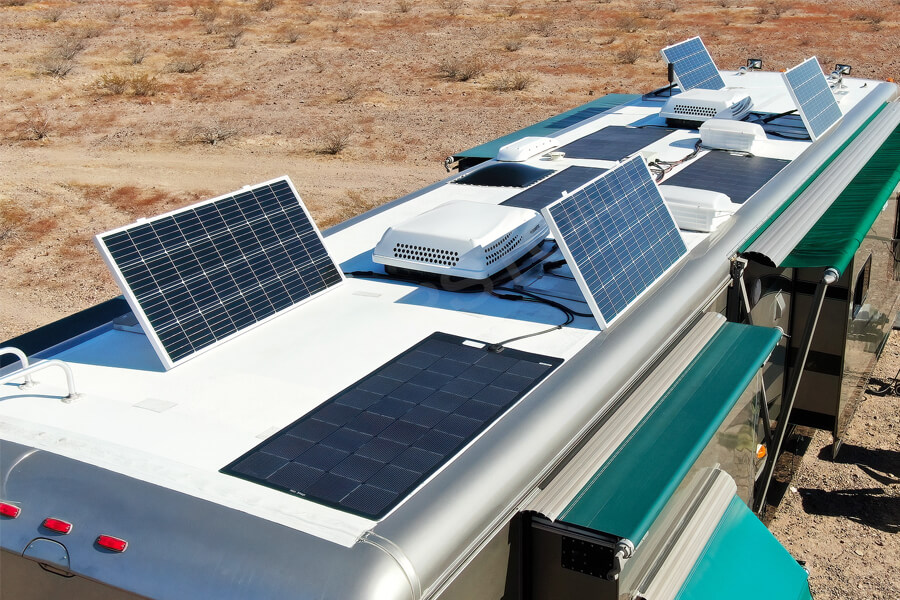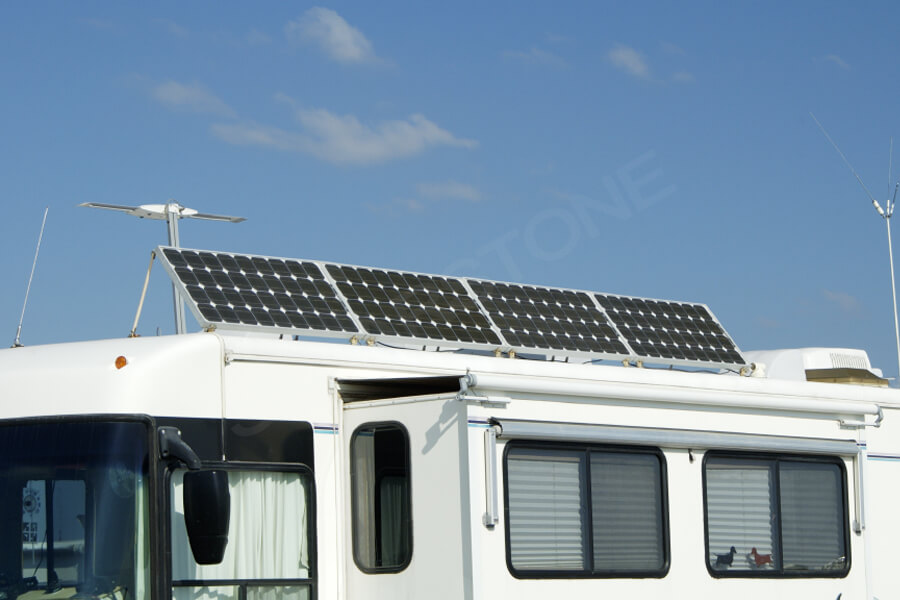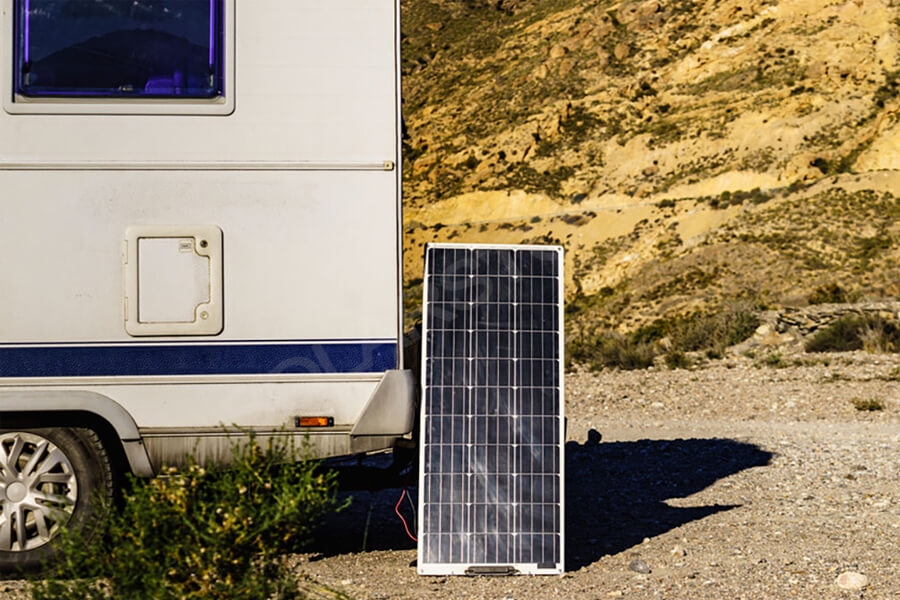Many customers find it strange why solar panels with the same appearance have vastly different prices when choosing them? Some solar panels only cost 3 yuan/watt, while others cost nearly 20 yuan/watt. What is the reason for this huge difference?
The impact of weight on price
In the environment of RV use, high-quality solar panels will consider every aspect: power generation efficiency, power generation safety, and vehicle impact, service life, road traffic regulations.
So why is the weight of solar panels important?
When RVs leave the factory, RV manufacturers have weight restrictions in order to comply with national policies on the road. For example, trailer RVs cannot exceed a weight of 700KG on the road.
The weight of the RV itself, various household appliances, and daily necessities already occupy a large proportion of the weight. While maintaining efficiency, the lighter the solar panels, the better. At the same time, the lighter the solar panels, the higher the price.
At present, lightweight solar panels using ETFE material packaging materials on the market have a total weight of 12 kilograms for 400 watts, which is only 30% of the weight of ordinary glass panels. Although it has become lighter in weight, its durability and impact resistance remain stable in outdoor scenarios of RV movement, and there will be no breakage of glass components.
The impact of temperature on price
Is the influence of temperature on solar panels really important?
Many customers believe that the more sunlight a solar panel shines on, the hotter the solar panel, and the greater the power generation. When the solar panel is at 25 ℃ and illuminated at 90 ° C, it is the time when its power generation efficiency is highest.
When the temperature exceeds 25 ℃, for every 1 ℃ increase in temperature, the power generation of the solar panel decreases by 0.3%. Therefore, when ordinary glass is used as the packaging surface, due to the transparent and thermal conductivity characteristics of the glass, the temperature of the solar panel will be greatly increased, thereby affecting the power generation.
During the high temperature of summer, touching the glass surface of the solar panel is a hot and easy to fry egg state. In this situation, although there is sufficient sunlight and high outdoor temperature, the power generation cannot meet the customer’s expected power generation.
The impact of crystalline silicon solar cells on prices
Crystal silicon solar cells determine the quality of solar panels.
The solar panel is composed of “crystalline silicon cells”, which are then packaged to form the solar panel. Therefore, the type and quality of “invisible solar cells” are one of the important determining factors for the power generation efficiency and service life of solar panels.
Solar cells are divided into monocrystalline silicon and polycrystalline silicon by type. With the maturity of technology, monocrystalline silicon has gradually become mainstream due to its advantages in price and efficiency.
Because the solar cells that make up a solar panel are graded, there are also levels of solar panels. Solar cells include three levels: A, B, and C.
A-grade solar cells are basically flawless and may have slight scratches;
B-grade solar cells may have defects such as leakage, virtual printing, and broken grids;
C-grade solar cells are mainly recycled solar cells, which may have problems such as edge collapse, large area virtual printing, loose lines, and severe contamination.
But these solar panels are all legal and used as qualified products in solar panels. The prices, power generation efficiency, and service life of different quality levels may vary, but as qualified products, B and C grade solar cells are priced low and may be used by some businesses. This also explains the significant difference in market prices for 100 watt solar panels.
The silicon material used in solar cells is very fragile and easily damaged, so the packaging process will also affect the integrity of solar cells.
After the packaging process of solar panels is completed, comprehensive testing needs to be carried out using EL testing instruments. Solar panels that show cracks and black clumps during EL testing are either B-grade or C-grade solar panels, and these black shadows are grid breaks and cracks.
In situations where it is not visible to the naked eye, many customers may feel that these solar panels are no different, but in practical use, there will be a significant difference in power generation efficiency and lifespan between the two. Cracks and fragments not only affect power generation efficiency and usage, but also pose safety hazards due to local solar cell current short circuits.
In summary, there are several reasons that affect the price of solar panels
① The packaging material for solar panels, the lighter the material, the less weight the vehicle will bear, the less damage it will cause to the vehicle, and the higher the price;
② The packaging materials of solar panels (surface material, aluminum frame, back panel, etc.) have good corrosion resistance, and the better the heat dissipation, stress, and power generation of solar panels, the higher the price;
③ The selection of solar monocrystalline silicon wafers, the higher the quality level of monocrystalline silicon, the higher the power generation of solar panels, and the higher the price.








